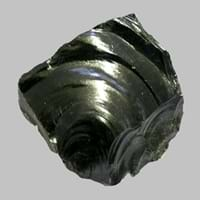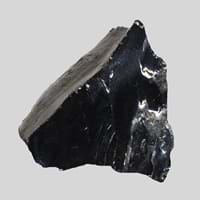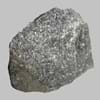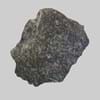Definition
Obsidian is a naturally occurring volcanic glass formed as an extrusive igneous rock. It is produced when felsic lava extruded from a volcano cools rapidly with minimum crystal growth
Anthracite is a type of sedimentary rock which is hard and is variety of coal that has high luster
Origin
Ethiopia
Pennsylvania, U.S.
Discoverer
Obsius
Unknown
Etymology
From Latin obsidianus, misprint of Obsianus (lapis) (stone) of Obsius
From Greek anthrakites, from anthrax, anthrak meaning coal
Class
Igneous Rocks
Metamorphic Rocks
Sub-Class
Durable Rock, Medium Hardness Rock
Durable Rock, Soft Rock
Group
Volcanic
Not Applicable
Other Categories
Opaque Rock
Coarse Grained Rock, Fine Grained Rock, Medium Grained Rock, Opaque Rock
Texture
Glassy
Amorphous, Glassy
Color
Black, Blue, Brown, Green, Orange, Red, Tan, Yellow
Black, Brown, Dark Brown, Grey, Light to Dark Grey
Durability
Durable
Durable
Appearance
Shiny
Veined or Pebbled
Interior Uses
Decorative Aggregates, Interior Decoration
Not Yet Used
Exterior Uses
Garden Decoration
Not Yet Used
Other Architectural Uses
Not Yet Used
Not Yet Used
Construction Industry
Arrowheads, Cutting Tool, Knives, Scrapers, Spear Points
Cement Manufacture, for Road Aggregate, Making natural cement, Steel Production
Medical Industry
Surgery
In Chemical and Pharmaceutical Industry, Manufacture of Aspirins
Antiquity Uses
Artifacts, Jewellery
Not Yet Used
Commercial Uses
Creating Artwork, Mirror, Used in aquariums
Alumina Refineries, Electricity Generation, Liquid Fuel, Manufacture of Soap, Solvents, Dyes, Plastics and Fibres, Paper Industry
Types
Fireworks Obsidian, Mahogany, Sheen Obsidian, Snowflake obsidian and Velvet Peacock Obsidian
Semi-anthracite and Meta-anthracite
Features
Blocks negativity, Helps to protect against depression
Helps in production of Heat and Electricity, Used as fossil fuel
Archaeological Significance
Monuments
Not Yet Used
Not Yet Used
Famous Monuments
Not Applicable
Not Applicable
Sculpture
Not Yet Used
Not Yet Used
Famous Sculptures
Not Applicable
Not Applicable
Figurines
Not Yet Used
Not Yet Used
Formation
When the lava is released from volcano, it undergoes a very rapid cooling which freezes the mechanisms of crystallization. The result is a volcanic glass with a uniform smooth texture.
Anthracite forms from the accumulation of plant debris in a swamp environment. When plant debris dies and falls into the swamp, the standing water of the swamp protects it from decay.
Mineral Content
Not Available
Calcite, Clay, Clay Minerals
Compound Content
Aluminium Oxide, CaO, Iron(III) Oxide, FeO, Potassium Oxide, MgO, MnO, Sodium Oxide, Phosphorus Pentoxide, Silicon Dioxide, Titanium Dioxide
Carbon, Hydrogen, Nitrogen, Oxygen, Sulphur
Types of Metamorphism
Burial Metamorphism, Cataclastic Metamorphism, Contact Metamorphism
Burial Metamorphism, Contact Metamorphism, Regional Metamorphism
Types of Weathering
Biological Weathering, Chemical Weathering, Mechanical Weathering
Not Applicable
Types of Erosion
Chemical Erosion, Coastal Erosion, Glacier Erosion
Not Applicable
Grain Size
Not Applicable
Medium to Fine Coarse Grained
Fracture
Conchoidal
Conchoidal
Porosity
Very Less Porous
Less Porous
Compressive Strength
Not Available
Cleavage
Non-Existent
Non-Existent
Toughness
Not Available
Not Available
Specific Gravity
2.6-2.7
1.1-1.4
Transparency
Translucent
Opaque
Density
2.6 g/cm3
1.25-2.5 g/cm3
Resistance
Heat Resistant, Impact Resistant
Heat Resistant, Water Resistant
Deposits in Eastern Continents
Asia
Afghanistan, Indonesia, Japan, Russia
Bangladesh, Burma, Cambodia, China, India, Indonesia, Kazakhstan, Malaysia, Mongolia, Pakistan, Turkey, Vietnam
Africa
Kenya
Botswana, Kenya, Morocco, Mozambique, South Africa, Tanzania
Europe
Greece, Hungary, Iceland, Italy, Turkey
Belgium, Bulgaria, England, France, Germany, Greece, Hungary, Kosovo, Netherlands, Norway, Poland, Romania, Serbia, Slovakia, Slovenia, The Czech Republic, Ukraine, United Kingdom
Others
Not Yet Found
Not Yet Found
Deposits in Western Continents
North America
Canada, Mexico, USA
Canada, Mexico, USA
South America
Argentina, Chile, Ecuador, Peru
Brazil, Chile, Colombia, Venezuela
Deposits in Oceania Continent
Australia
New Zealand
New South Wales, Queensland, Victoria
Obsidian vs Anthracite Characteristics
Though some rocks look identical, they have certain characteristics which distinguish them from others. Characteristics of rocks include texture, appearance, color, fracture, streak, hardness etc. Obsidian vs Anthracite characteristics assist us to distinguish and recognize rocks. Also you can check about Properties of Obsidian and Properties of Anthracite. Learn more about Obsidian vs Anthracite in the next section. The interior uses of Obsidian include Decorative aggregates and Interior decoration whereas the interior uses of Anthracite include Not yet used. Due to some exceptional properties of Obsidian and Anthracite, they have various applications in construction industry. The uses of Obsidian in construction industry include Arrowheads, Cutting tool, Knives, Scrapers, Spear points and that of Anthracite include Cement manufacture, For road aggregate, Making natural cement, Steel production.
More about Obsidian and Anthracite
Here you can know more about Obsidian and Anthracite. The life cycle of a rock consists of formation of rock, composition of rock and transformation of rock. The composition of Obsidian and Anthracite consists of mineral content and compound content. The mineral content of Obsidian is not available and mineral content of Anthracite includes Calcite, Clay, Clay Minerals. You can also check out the list of all Igneous Rocks. When we have to compare Obsidian vs Anthracite, the texture, color and appearance plays an important role in determining the type of rock. Obsidian is available in black, blue, brown, green, orange, red, tan, yellow colors whereas, Anthracite is available in black, brown, dark brown, grey, light to dark grey colors. Appearance of Obsidian is Shiny and that of Anthracite is Veined or Pebbled. Properties of rock is another aspect for Obsidian vs Anthracite. The hardness of Obsidian is 5-5.5 and that of Anthracite is 1-1.5. The types of Obsidian are Fireworks Obsidian, Mahogany, Sheen Obsidian, Snowflake obsidian and Velvet Peacock Obsidian whereas types of Anthracite are Semi-anthracite and Meta-anthracite. Streak of rock is the color of powder produced when it is dragged across an unweathered surface. The streak of Obsidian is white while that of Anthracite is black. The specific heat capacity of Obsidian is 0.92 kJ/Kg K and that of Anthracite is 1.32 kJ/Kg K. Depending on the properties like hardness, toughness, specific heat capacity, porosity etc., rocks are resistant to heat, wear, impact, etc.Obsidian is heat resistant, impact resistant whereas Anthracite is heat resistant, water resistant.





